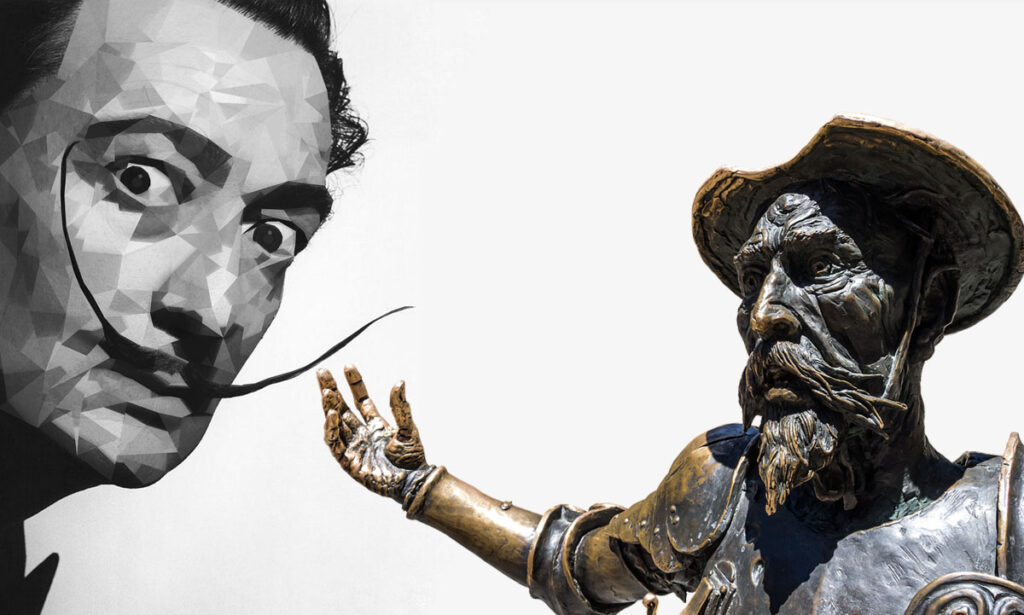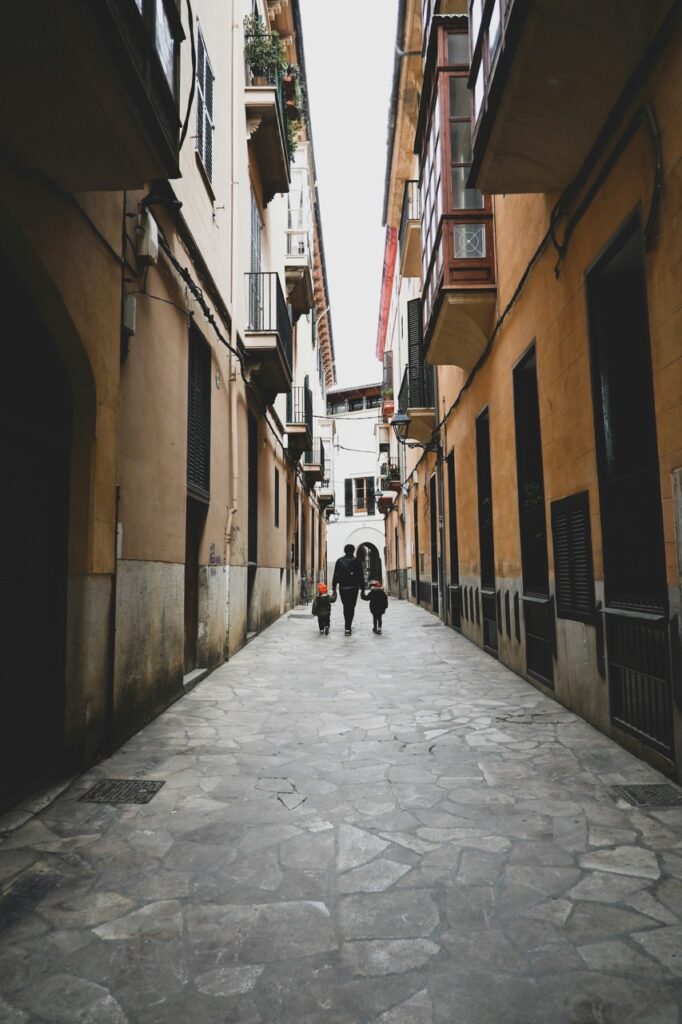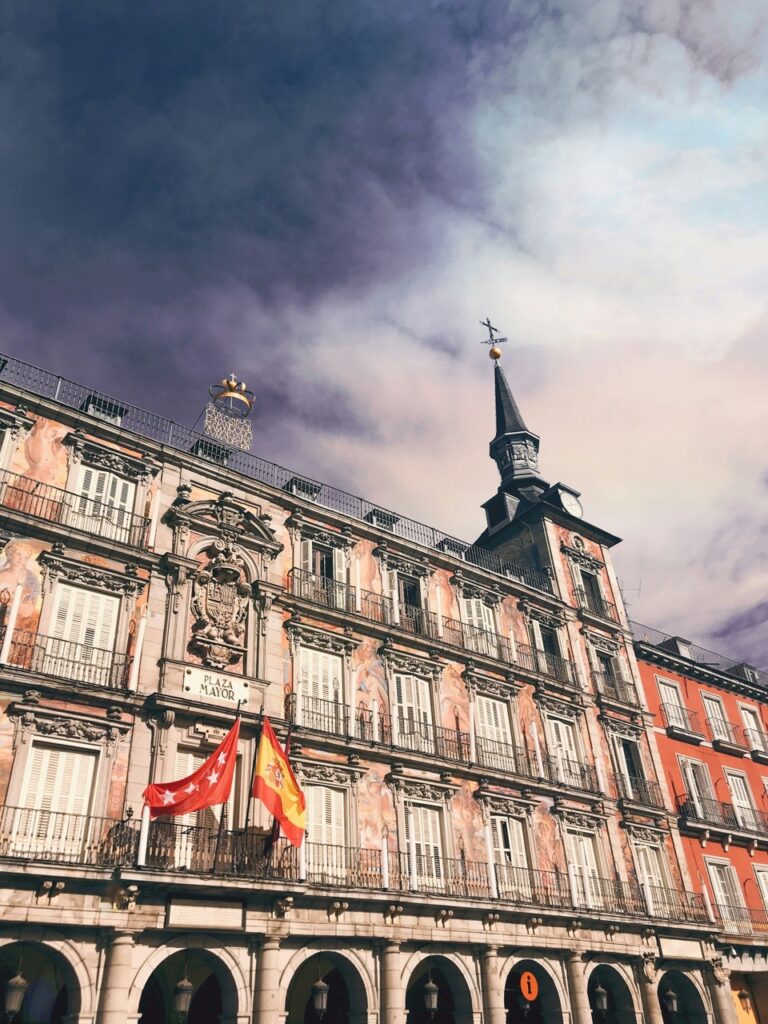Halloween may be a holiday that flies under the radar in other countries, but Spain is not one of them!
While the holiday traces its roots all the way back to the Celtic Samhain festival in Ireland, this originally pagan holiday has since taken the modern world by storm and transformed into a global holiday.
Curious how Halloween is celebrated in Spain?
We’ll go over all you need to know about current Halloween traditions in Spain!
Origins and Influence of Halloween in Spain
Because of its Celtic origins, Halloween’s roots stem from Ireland and even spill over into Northern Spain (Galicia!)
Halloween, or All Hallows Eve, began as a way to welcome the end-of-summer harvest.
Bonfires were lit and costumes were donned during this pagan celebration originally known as Samhain.
The 9th century brought about the shift in how Samhain would eventually become known as the modern-day Halloween.
Church leaders in the 5th century attempted a Christian re-framing of Samhain celebrations by moving festivities to May as a way to celebrate martyrs and saints.
Centuries later in 837, Pope Gregory III would order celebratory observances back to the original time of the year and designated November 1st as a day to honor the saints.
November 2nd followed as a designated day to honor all souls.
Celebrate Halloween in Spain — The Beginnings
Even with the newly minted All Souls’ and All Saints’ days, these new holidays could not push out the original pagan aspects of Samhain.
October 31st became colloquially known as All Hallows Eve and later Halloween.
Many of the original ancient practices that were used in Ireland and Scotland have since stayed and are even practiced today!
Does trick-or-treating (truco o trato) ring a bell?
Originally known as “mumming”, trick-or-treating was a pagan practice in Ireland where people put on costumes and sang songs to the dead.
As payment? Cakes were handed out to those who participated, much like the sweet treats and candy we see being handed out today.
Today, the 31st has become more of a way to celebrate the approaching November 1st holy day in Spain: All Saints’ Day.
All Saints’ Day should not be confused with All Souls’ Day: Día de los Fieles Difuntos.
Today, Halloween festivities in Spain still abound leading up to these two Spanish holy days.
Tip: Curious how you would say All Hallows Eve in Spanish? La víspera del día de todos los santos!

Halloween Traditions in Spain — Key Differences from an American Halloween
The true origin of Halloween may be a Celtic one, but the world has embraced the holiday with open arms.
Even with its growing popularity, Halloween in Spain does have some key differences from an American Halloween.
Generally, All Saints’ Day is the more regularly observed celebration across Spain, with its own set of traditions, celebrations, and sweets.
The day itself is typically a little more somber as it’s meant to honor loved ones who have passed.
However, Spaniards are still known to dress up and enjoy a night of spooky fun on the 31st!
Halloween in America is a little more celebratory overall, filled with carved Jack-o’-Lanterns, costume parties, black cats, and bobbing for apples.
Celebrations in America typically end on October 31st and don’t bleed into the 1st and 2nd of November.
While you may not see the more traditional Americanized Halloween imagery in Spain, it does exist!
For example, costumes in Spain tend to take the more traditional route with classic dress up figures like ghosts, zombies, and vampires.
When it comes to costumes in America, they’re often borrowed from books, pop culture, and TV or movies.
Overall, Halloween in America is a little more commercialized, whereas Spain focuses a bit more on family, remembrance, and the continuity of life.
Popular Halloween Traditions in Spain — Eat, Drink, and Be Scary
Halloween customs in Spain run the gamut from trick-or-treating to ghostly processions and beyond.
In the northwest region of Galicia, Halloween’s ties to Samaín are more closely observed.
Mythological legends are a regular part of life in Galicia—Halloween is no different!
If you’re in the area during Halloween, you might just witness La Queimada, a popular Celtic ritual that is said to evoke Galician witches and ward off evil spirits.
You might even hear tales of Santa Compaña: The Procession of the Dead.
A more traditional Catalan custom is to eat chestnuts “before the fire” before going to the cemetery to pay respects to loved ones on November 1st.
There are also plenty of Halloween-themed parties and events throughout the country, where people dress up in costumes and enjoy the Spanish nightlife.
Halloween in Spain — Top Spanish Halloween Events and Attractions
Depending on where you’re at in Spain, Halloween events abound!
In the Madrid area? Why not join a Halloween pub crawl starting in Plaza Mayor? Or take part in a historic Halloween tour going over the Legends of Old Madrid.
If you’re a fan of the spooky or supernatural side of Halloween, Galicia is the place to be.
Steeped in history and mystical Celtic traditions, Galicia is known as the land of witches.
Brave the haunted forests, gaze at spooky parades, or take part in traditional rituals like La Queimada.
Málaga is another city that embraces the spooky season.
Calle Larios, in the city center of Málaga, boasts creative window displays made up of all sorts of Halloween paraphernalia, and people are generally decked out in costumes roaming the area.
Prefer more of a historic night out? Barcelona offers ghost tours in the famous Gothic Quarter!
Learn about the city’s rich history among an eerie nighttime setting—perfect for Halloween.

Celebrating All Saints’ Day and Día de los Difuntos
All Saints’ Day (Dia de Todos los Santos) and All Souls’ Day (Día de los Difuntos) are two days heavily observed throughout Spain.
All Souls’ Day is sometimes referred to as Day of the Dead in Spain.
These two days follow the more American Halloween observations of October 31st, and are observed on November 1st and 2nd respectively.
Dia de Todos los Santos and Día de los Difuntos are important national holidays that focus on honoring the dead and celebrating life’s continuity.
Similar customs are observed throughout the country on both days, such as visiting family members’ graves, leaving flowers and food out, and gathering for food and drinks.
While both days are meant for spending time with family members, All Souls’ Day is a more solemn affair than its November 1st counterpart.
Spanish-Inspired Halloween Foods and Treats
Many of the foods and sweets on offer during celebrations in Spain point to the communal aspect of the season, with many of them prepared amongst loved ones.
After a night of trick-or-treating and “goblin-ing” up spooky imagery, you might be reaching for Huesos de Santo (Holy Bones or Saint’s Bones).
These traditional pastries are often eaten throughout Halloween festivities, but more specifically on All Saints’ Day.
The sweet pastries are made from marzipan, which is shaped into a tube, or “bone”, and filled with a thick, egg yolk and sugar paste to resemble marrow. A bone-afide sweet treat!
Buñuelos de viento is another traditional sweet eaten during the Halloween season.
This traditional snack is enjoyed during many holidays throughout the year, Halloween and All Saints’ Day included.
Buñuelos de viento is a fried dough ball filled with a variety of fillings like custard, jams, or whipped cream.
You’ll also likely come across panellets or castañas (chestnuts) during the Halloween season.
Candy in America is more common during Halloween, whereas Spain brings traditional sweets to the table—all treats and no tricks when it comes to Spanish-inspired Halloween foods.
Whether you’re in America, Spain, or somewhere in between, there’s nothing better than coming across a good snack table at a Halloween party or after a Halloween bar crawl!
What’s your favorite Halloween delicacy or tradition? Let us know in the comments below!



